Projects
Below is a list of some of APDC's funded projects. We also provide guidance and assistance to inventors from medical institutions, clinics, private healthcare practitioners, researchers, as well as the business community, who have medical device ideas for use in pediatric patients.
The CellScope Oto(TM) device is a smartphone otoscope system that includes a simple attachment to convert a standard smartphone into a digital otoscope with data transmission capabilities. The Remotoscope thus enables diagnosis of ear infections in children by a remote physician.
Access4Kids is a unique assistive input device that enables access to rehabilitation apps for children with limited upper-body motor control.
PneumoKazoo is an easy-to-use, noninvasive, disposable solution for collecting lung speciomens to better diagnose pneumonia in children. PneumoKazoo uses fluid mechanics to separate the upper airway particles from the lower airway particles so that only a lung specimen is captured on the filter at the end of the device.
SurTube™ is a nonradiographic system of differentiating the respiratory, gastric, small bowel or esophageal location of a feeding tube when placed in a patient.
AnemoCheck is a point-of-care, patient-operated, self-contained, disposable, diagnostic test for anemia.
The Virtual Pediatric Assistant is a continuous and contact-free infant monitoring system to predict and prevent postnatal cardiac and respiratory morbidity and mortality without the utilization of leads, cuffs, electrodes or other attachments to the body that can cause skin irritation.
The smartBrace is a scoliosis brace that provides feedback to the patient, parents, and doctors to guide patients toward proper usage and compliance.
KIDS CRRT is the first safe, accurate, low extracorporeal volume continual renal replacement therapy device developed specifically for the pediatric population. KIDS CRRT uses a “conservation of volume” approach to ensure accuracy.
The prosthetic trileaflet valve will be targeted to children 2-12 years old to treat congenital absence, malformation, or stenosis of aortic valves. This valve will grow with children, thus eliminating the need for future valve replacement.
Buzzy is a cold pack placed under constant vibration and has been proven to decrease the pain of IV access when placed proximal during the procedure.
The Biosorb™ Pediatric Dissolving Stent device is a bioabsorbable stent system for the treatment of pulmonary artery stenosis. The use of bioabsorbable stents to treat obstructions in blood vessels of pediatric patients provides the benefit of stenting and removes the risks associated with a permanent implant (i.e., the need to re-intervene and the long term clinical management of the patient).
The hydrogel device is designed to delay regrowth of bone in the suture following surgical intervention for craniosynostosis, and provides the ability to create a functioning suture much like the natural and normal state of calvarial sutures at the age of an infant. The device is an injectable hydrogel that spontaneously polymerizes in situ and can be used at the time of the original surgery or delivered percutaneously after surgery.
The Handy Eye Chart™ uses optotypes consisting of hand gesture symbols instead of letters, and children can use their own hands to replicate the gesture to indicate recognition of the optotypes. There are many children who cannot be tested with existing visual acuity charts including the very young, non-verbal, non-English speaking or developmentally challenged children.
Improves and monitors hand sanitizing compliance among providers with an audio recording reminder and compliance tracking feature. It provides a low cost and highly customizable solution to this problem that has the potential to reduce the costs associated with both treating HAIs and compliance monitoring.
This new shunt will simplify the detection of shunt malfunctions while reducing the patient’s exposure to harmful side effects such as radiation from CAT scans to examine the shunt.
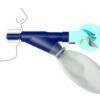 PneumoKazoo
PneumoKazoo Virtual Pediatric Assistant
Virtual Pediatric Assistant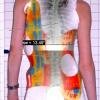 smartBRACE
smartBRACE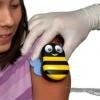 Buzzy
Buzzy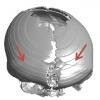 Hydrogel Device for Controlling Cranial Suture Closure
Hydrogel Device for Controlling Cranial Suture Closure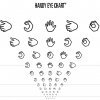 Handy Eye Chart™
Handy Eye Chart™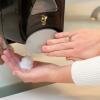 Hand Sanitizer Compliance Device
Hand Sanitizer Compliance Device Self-Monitoring Shunt for Hydrocephalus
Self-Monitoring Shunt for Hydrocephalus



